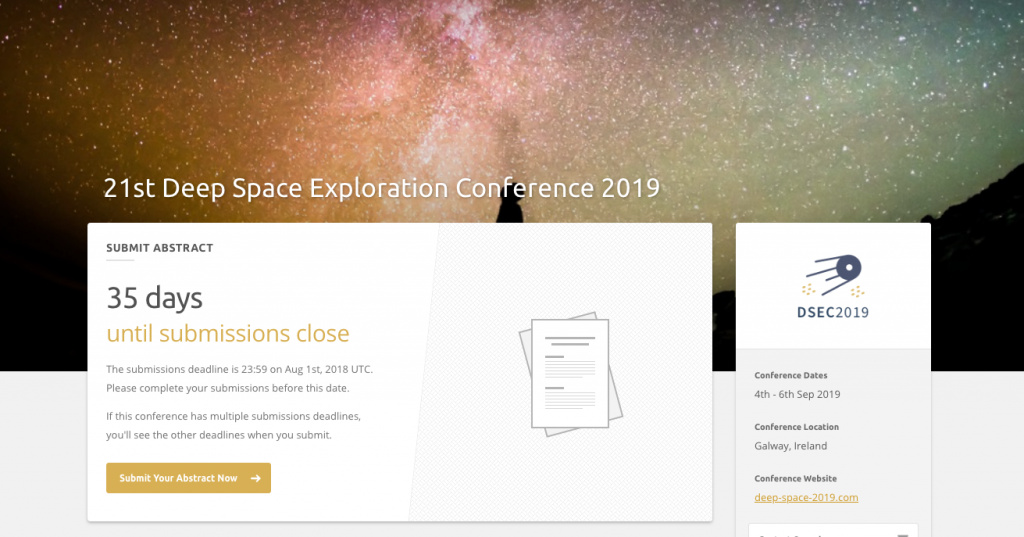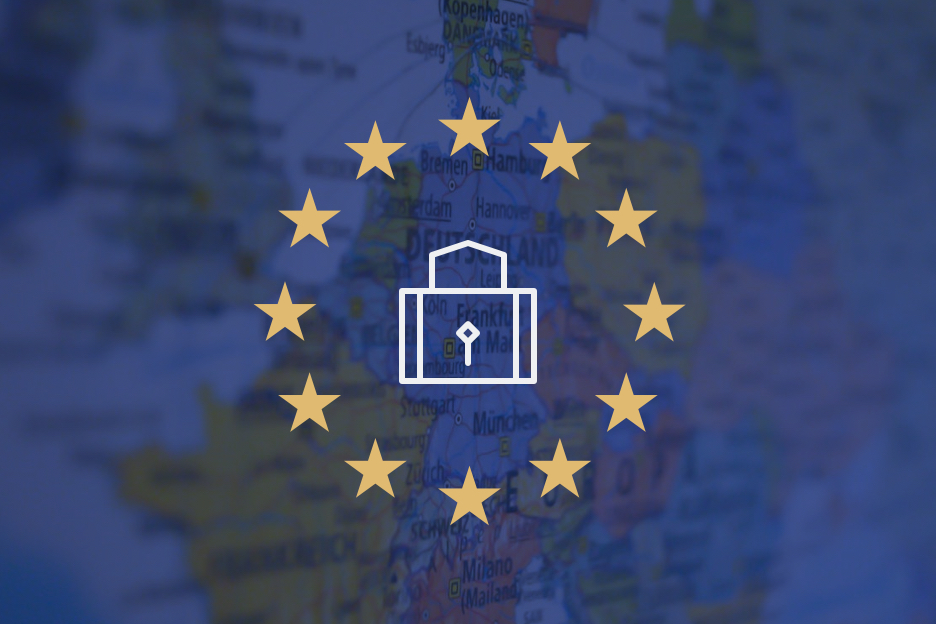In order to collect submissions for your conference, you’ll need to send a call for papers (CFP). Here’s how to craft the perfect one.
A call for papers, also known as a call for abstracts or a call for proposals, is an invitation email. Developed collaboratively by the programme chair and general chair, it’s typically dispatched about eight to nine months prior to the conference. This communication serves a dual purpose: firstly, it announces the upcoming event to the research community, and secondly, it initiates the submission process for individuals wishing to present their work at the conference. Essentially, it acts as a beacon signalling to potential contributors, inviting them to share their valuable knowledge and insights, thereby shaping the content of the conference programme.
The current system of sending out calls for papers isn’t just a headache for researchers; it’s a hassle for conference organisers too. Organising committees are well aware that they’re competing for attention in researchers’ overflowing inboxes. To ensure their call doesn’t go unnoticed, they often end up sending it out four or five times.
But it’s not just early-career researchers they struggle to reach. Academics change jobs and email addresses, leaving organisers with outdated mailing lists. We didn’t fully grasp the extent of this issue until we developed a call for papers tool. One conference chair attempted to upload a mailing list with 20,000 emails, only to discover many were invalid or belonged to academics who had moved on years ago.
To tackle these missed connections, organising committees resort to crossposting their conference announcements across various channels: conference mailing lists, accessible listservs, and the mailing lists of helpful contacts willing to spread the word.
Key objectives of your call for papers

Photo by Andrea Piacquadio
Grab attention & pique interest
Your call for papers is often the first impression you make on potential attendees. Since researchers receive countless call for papers emails, yours needs to cut through the clutter and spark curiosity. Think of it like an elevator pitch. Your message has to be catchy, informative, and scannable. Around 300 carefully selected words that set the tone for your entire conference.
It’s no easy feat, as our CEO, Paul Killoran found, saying “Back in 2008, I was helping my supervisor organise an academic conference. We sent out a fairly standard call for papers email. Then, he did something unusual. He started calling up colleagues and contacts he’d met over the years and asking them to submit an abstract. And asking them to encourage their students to submit.” To really grab attention and pique interest you need to
- Call people up and tell them about it
- Exhibit – and speak – at related conferences
- Send a personalised call for papers
Attract top talent
The world is brimming with talented researchers and experts, eager to share their work in reputable forums. When you articulate the significance of your conference and its unique theme with an engaging call for papers, you’re more likely to capture the interest of those who align with your vision. Attracting the calibre of talent you’re looking for is key to your conference’s success.
Our Ex Ordo CEO, Paul Killoran, is a firm believer in the power of personalisation. If the spray-and-pray approach isn’t working for you, he recommends reaching out to people directly: “Engaging with people directly is much more valuable than just sending emails – no matter how big your conference mailing list is. Pick up the phone and call colleagues and contacts you’ve made over the years and ask them to submit an abstract. Ask them to encourage their colleagues to submit as well. Because you’ve already made a connection with them, it’s more likely they’ll be on the lookout for your email, and take action when they get it.”
Define the essence of your event
A nicely laid-out call for papers gives people a quick snapshot of what your conference is all about and who’s in charge, boosting trust from the get-go. It spells out the conference’s theme and topics, giving potential attendees an idea of what’s in store. This helps ensure that submissions match the event’s focus, leading to a cohesive and impactful programme.
Create a buzz
A captivating call for papers not only invites participation but also sparks excitement and anticipation within your community. By portraying your conference as something special, you get people excited about attending. They start picturing themselves there, learning, discussing, and connecting with others who share their interests.
To boost your online presence, consider using conference announcement sites, many of which are free. These sites notify researchers interested in your field about your event, directing them to your conference website to submit papers, register, or learn more. We’ve compiled a helpful list of these sites, categorised by industry and discipline, to give you a head start.
Build a diverse programme
Enhance networking opportunities
The experts you draw in through your call for papers bring diversity and vibrancy to your event. Their varied backgrounds and expertise create a dynamic environment, ripe for connections, collaborations, and lasting relationships. Just think about the lifelong friendship formed between a young Henry Ford and his idol Thomas Edison at a convention back in 1896. Moments like these, where great minds meet, have the power to shape history.
Supercharge with software

Essential info to include in your call for papers email
We’ve whipped up a handy email template that’s been tried and tested. It’s like a cheat sheet, walking you through all the bits you need for a killer CFP message, from introducing your event to laying out the rules. With this template, you can kick off your call for papers with confidence, knowing you’re on track to make your conference a hit!
Lets start off with the guidelines
Give your email a strong subject line
Generic subject lines like ‘Call for abstracts’ can get lost in the crowd, and may even get caught in spam folders. Instead, your subject line should contain the gist of your email content and your call-to-action (CTA).
It needs to be relevant and super succinct. If it’s too long, it’ll get cut off, and your message won’t be as effective. Ideally, use the shortened name of your conference.
Manage your list of recipients
Build your list wisely so you don’t disrupt the metrics you have in place for your call for papers email campaign. You can start with the list of authors and delegates who participated in your conference in the past. This will ensure that the list you’re currently using only contains people who want to hear from you.
Make your content easy to read & find info
While attention spans may be getting shorter, content that is highly relevant or entertaining will always hold its audience. To capture the attention of your reader, the info you include in your call for papers email should immediately make it clear what your conference is about, and who is organising it.
Ensure your call-to-action stands out
In order for people to act when they receive your call for papers email, it’s important that your CTA link or button stands out. A different colour font for the link or white space around the button can help. You should also place your CTA near the top of the email content.
Don’t rely on images to communicate your message
We strongly advise you not to rely on images in your call for papers email. Save the cool promotional images for social media
Sell the importance of your event
Keynote speakers have a lot of pulling power for conferences. They often set the tone of the event and boost the conference’s credibility. So don’t be shy about name dropping in your call for papers. Authors and delegates are often attracted to particular conferences by the profile of the keynote speaker, or even an exciting breakout session.
Make it easy to submit
Your call for papers shouldn’t end when someone clicks the CTA link or button. Think about your call for papers as extending right up until an author completes their submission. Your conference management system and abstract management software needs to be user-friendly, making it simple for authors to follow your submission guidelines and upload their work quickly. If the process is clunky or cumbersome, they may lose interest in completing their submission, which is bad news for the volume and variety of your conference programme
Header
Start with your conference name (this should also be included in your email subject line), the dates and location of your event (if virtual, the name of the platform where attendees will be able to join), and a link to your conference website.
Conference history & highlights
After a brief intro, you should provide a bit of history about your conference, and explain why it’s an event worth attending. If you have any guest speakers or special events (even social events) lined up, it would be well worth mentioning these here, as they could help attract potential authors and delegates. If your conference is partnered with an academic journal, or sponsored by an affiliate, you can mention this, too. And if you have a video recap or ‘highlight reel’ from your previous conference, you can link to it here.
Conference theme, topics of interest, & link to author guidelines
Here’s where you announce the theme of your conference, and a list of topics of interest to give potential contributors an idea of what kind of content you’re looking for. You should also link to a dedicated page on your website, commonly referred to as ‘author guidelines’, where you provide more granular details of submission requirements. This would include info such as what formats you will be accepting, e.g. abstracts, extended abstracts, or full papers, maximum word count, formatting conventions, etc. It should also include an outline of your evaluation and selection process, and your policy for accepted papers.
Important dates & contact details
You need to provide a list of important dates (submission deadline, acceptance notifications, final paper submission, etc.). And the names and roles of those on your organising committee, including the point of contact for authors who may have queries regarding the programme. It’d be wise to also include an email address for general conference queries.
Legal compliance
Be sure to play by the rules and stay GDPR compliant to avoid any unnecessary fines. This includes giving recipients an escape hatch with an ‘Unsubscribe’ button.

A CFP template for you to use
<Conference name>
<Conference date and location>
<Link to conference website>
Dear Scholars, Researchers, and Experts,
It’s my great pleasure to invite you to <conference name>, which is being organised by <organisation name>, and will be hosted in <conference location> on <conference dates>.
About our Conference:
<Conference name> has a rich history of fostering cutting-edge research, promoting interdisciplinary collaboration, and facilitating the exchange of innovative ideas. As a respected platform in the field of <field/area>, our conference has consistently attracted leading academics, practitioners, and thought leaders from around the world.
Theme:
This year, we are excited to delve into the theme of <conference theme>, an exploration that promises to unearth fresh insights and spark dynamic conversations.
Topics of Interest:
<List of topics>
Guide for Authors:
Authors are encouraged to submit their latest research, case studies, and technological advancements aligned with the conference theme and topics of interest.
Please use our online abstract management system which is accessible through the following link: <link to abstract management system login page or online conference form>
For detailed guidelines on abstract formatting, paper submission, and other relevant information, please visit our website: <link to author guidelines page on website>
Important Dates:
Deadline for submission: <date>
Notification of acceptance: <date>
Deadline for final paper submission: <date>
Organising Committee:
<Roles and names of organising committee members>
Contacts:
For any programme enquiries: <email address>
For all general enquiries: <email address>
We look forward to your contribution and the valuable insights you will bring to <conference name>. Your expertise and participation will enrich the discussions and collaborations that will shape the future of <field/area>.
Sincerely,
<Name of general chair>

Promote your call for papers using other avenues
If you’re only announcing your call for papers via email, you could be ignoring a whole cohort of potential authors and delegates. Social media, media releases, and tapping into your network can all help boost the reach of your call for papers.
Get social
Social media is a powerful marketing tool, not just to announce your call for papers, but also to promote your event and engage with attendees – before, during, and after your conference. LinkedIn and Twitter (as opposed to the likes of Instagram and TikTok) are probably your best options to reach potential authors and delegates within the scholarly and research space. Once you’ve decided which social platforms you’re going to use, devise a content strategy, choose someone to manage your accounts, and start posting.
Pitch & post
Write a media release for publications in your field, including your call for papers and a quote from your chair. You may also want to post this on any relevant listservs, which are moderated mailing lists used by researchers and academics.
Cross-pollination
Ask your conference sponsors to help promote your call for papers, as they want people at your event as much as you do. They could also encourage business partners to attend, and send your call for papers onto their contacts list.
If there’s another conference with similar topics to yours (and you’re not competing for authors and delegates), you can ask if they’ll share some of your call for papers flyers in their delegate packs, and if you can give a short address at their event. Be sure to return the favour.
Final thoughts
By investing time and effort into creating a captivating call for papers, you set the stage for a memorable conference experience. You attract top-tier participants, enrich your content, and foster an atmosphere of anticipation. If you pair your call for papers with a seamless abstract management system, then you’re well on your way to building a conference that is bound to leave a lasting impression.
